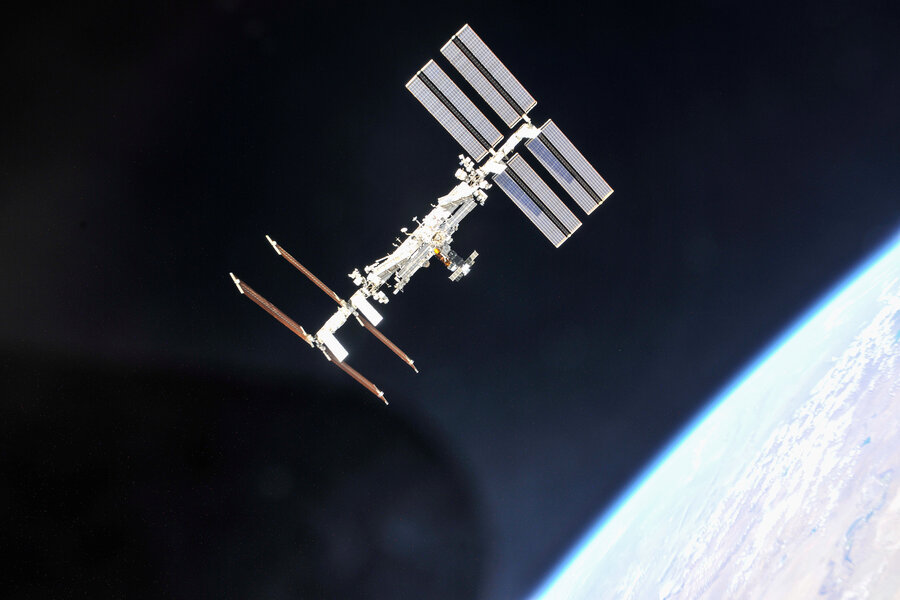20 years in orbit
Loading...
What is the most expensive machine ever built, costing roughly $150 billion?
If skies are clear, it can be spotted daily overhead at locations all over the world since it’s the third-brightest object in the night sky, after the moon and Venus (best viewing times are dawn and dusk).
The International Space Station is marking its 20th anniversary circling Earth, completing 16 orbits of the planet each day. Construction began on Nov. 20, 1998, but perhaps the station’s most remarkable achievements came in November 2000, when the first human crew arrived: a US Navy Seal and two Russian cosmonauts. Since that time humans have continually lived in space; some 230 visitors from 18 countries have come and gone from the ISS.
As such, the space station is not only a technological achievement but also a remarkable example of international cooperation. “The way we have put that program together with our international partners is absolutely the best example of how we can peacefully, successfully do complicated things,” retired NASA astronaut Nicole Stott told CNET earlier this year.
The construction of the ISS has been an engineering marvel; all the materials had to be shot into space in a series of launches, then assembled in an airless, hostile environment.
“Performing just one of these voyages safely was a major challenge but the station’s design called for 30 of them just to deliver the station’s basic building blocks,” writes David Nixon in his book “International Space Station: Architecture Beyond Earth.” (In the end, 42 flights brought up the principle components, 37 on US shuttles and five on Russian spacecraft.) “Against the odds, all arrived on orbit safely and flawlessly where they fitted together correctly and precisely.”
The final US shuttle mission in 2011 provided the materials to complete the station. Today it’s as long as a football field, powered by nearly two-thirds of an acre of solar panels.
For its 20th anniversary the ISS is about to receive a 3-D printer that will help it recycle its waste plastic into useful new items. Called the “Refabricator,” the device should cut down on the amount of cargo that arrives via costly resupply missions from Earth.
Despite its record run, the ISS may not have a long-term future. The United States may decide to end funding within the next decade. The station then might pass into private hands, part of the continuing privatization of space flight.
Even if the station were abandoned, it will have recorded a long list of achievements. With her 665 days aboard the ISS, for example, NASA’s Peggy Whitson set the record for the longest human stay in space.
The station has helped researchers learn much about how humans respond to living and working in space (crew members have undertaken 205 spacewalks to construct and maintain the ISS). That’s valuable preparation for the possible construction of a space station orbiting the moon, which would play a key role in humans returning to Earth’s nearest neighbor. And, of course, for the possibility of long-duration trips to Mars.
The great expense and difficulty of space travel and colonization means it will be best accomplished with the combined efforts of the world's nations. Regardless of their home country travelers looking down from the ISS at the blue ball called earth see no national boundaries, only a common home. The multinational effort behind the building of the ISS should be an inspiration – and a springboard – for closer international cooperation back on earth.
So look up sometime in the night sky. You just may spot a bright dot, the place where the permanent settlement of space begin.





